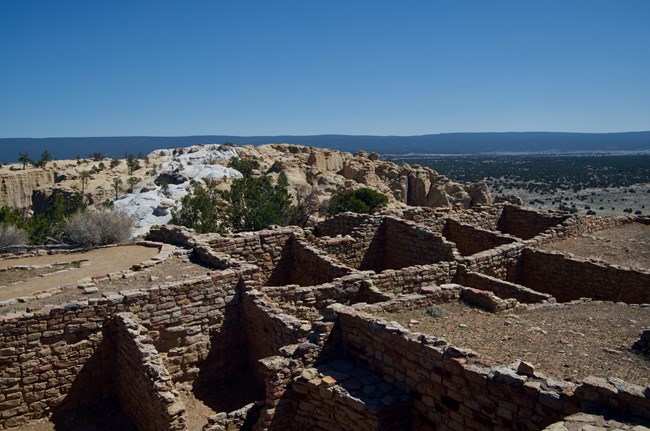
NPS Photo/J. Ellis Home on the Desert's RooftopVillagersThe Puebloans, agriculturalists of the high desert, were master builders. Their earliest structures, half-buried pithouses, evolved into above-ground pueblos by 1000 CE. Soon the ancestral Puebloans were building many of their villages on mesa tops, like the ones found at El Morro. Atsinna PuebloThe ancestral Puebloans made use of what they had around them: flat sedimentary rock easily cut up as slabs they could pile one on top of another and cement with clay and pebbles. The pueblo measures about 200’ by 300’ and would have housed between 500 and 600 people at its peak. Approximately 355 interconnected rooms surround an open courtyard. Square and circular ceremonial rooms--underground chambers known as kivas--were spaces for informal gatherings as well as their religious ceremonies. The Use of the LandscapeThe landscape around Atsinna would have been utilized by the ancestral Puebloans. Naturally occurring pools on the sandstone, called tinajas would have been used for seasonal water sources. Some may have been expanded to collect more water. In addition, hand-and-toe holds lead into the box canyon as well as near the pool, indicating the water source seen today along the Inscription Loop Trail would have been used during the Pueblo occupation. |
Last updated: November 13, 2023
